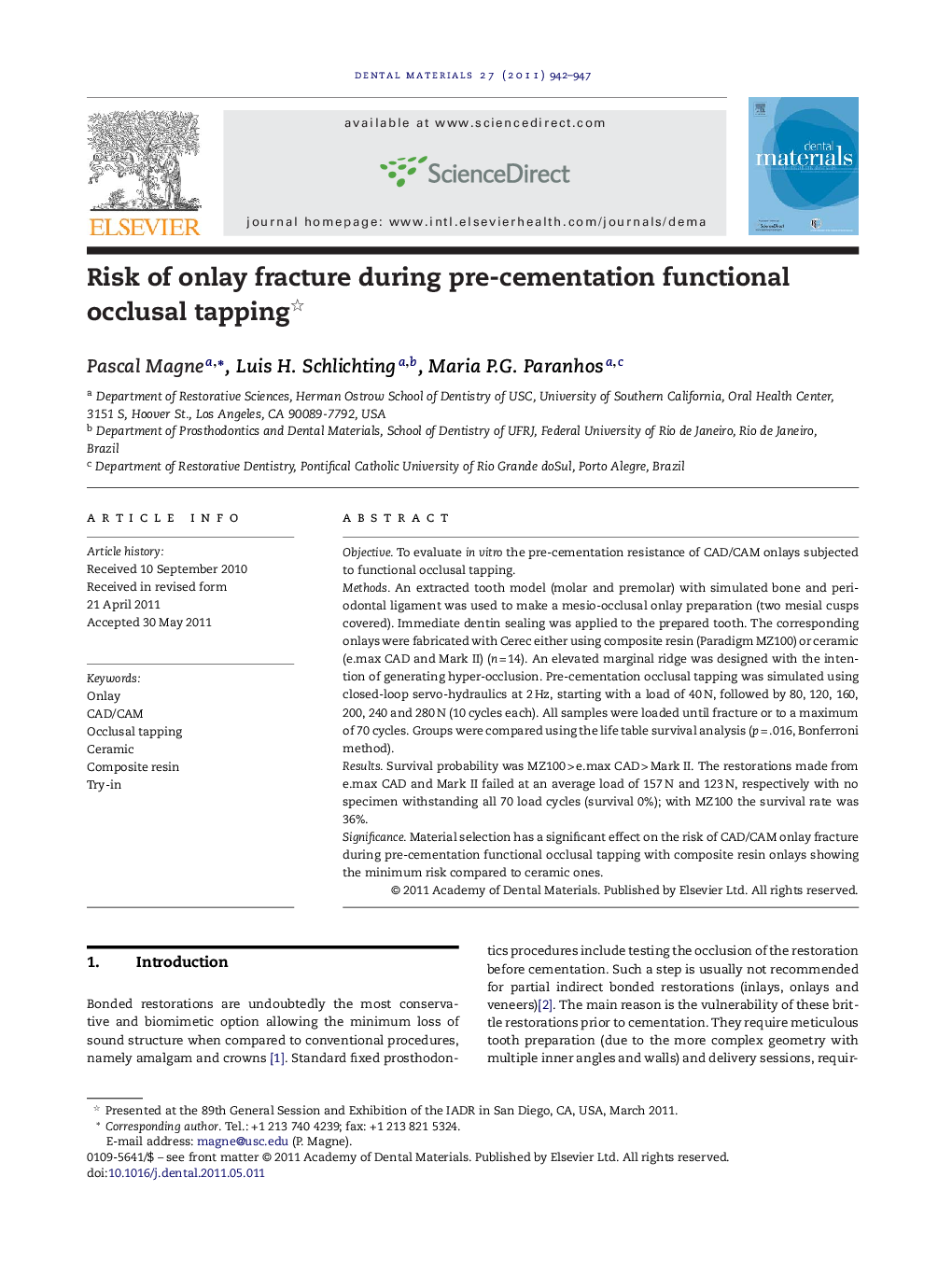| Article ID | Journal | Published Year | Pages | File Type |
|---|---|---|---|---|
| 1422362 | Dental Materials | 2011 | 6 Pages |
ObjectiveTo evaluate in vitro the pre-cementation resistance of CAD/CAM onlays subjected to functional occlusal tapping.MethodsAn extracted tooth model (molar and premolar) with simulated bone and periodontal ligament was used to make a mesio-occlusal onlay preparation (two mesial cusps covered). Immediate dentin sealing was applied to the prepared tooth. The corresponding onlays were fabricated with Cerec either using composite resin (Paradigm MZ100) or ceramic (e.max CAD and Mark II) (n = 14). An elevated marginal ridge was designed with the intention of generating hyper-occlusion. Pre-cementation occlusal tapping was simulated using closed-loop servo-hydraulics at 2 Hz, starting with a load of 40 N, followed by 80, 120, 160, 200, 240 and 280 N (10 cycles each). All samples were loaded until fracture or to a maximum of 70 cycles. Groups were compared using the life table survival analysis (p = .016, Bonferroni method).ResultsSurvival probability was MZ100 > e.max CAD > Mark II. The restorations made from e.max CAD and Mark II failed at an average load of 157 N and 123 N, respectively with no specimen withstanding all 70 load cycles (survival 0%); with MZ100 the survival rate was 36%.SignificanceMaterial selection has a significant effect on the risk of CAD/CAM onlay fracture during pre-cementation functional occlusal tapping with composite resin onlays showing the minimum risk compared to ceramic ones.
